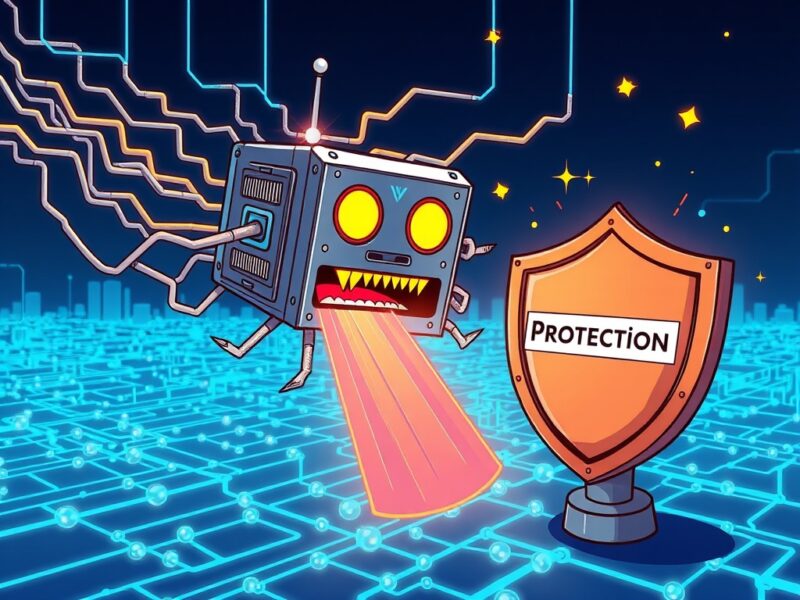Remarkable: US Bitcoin Miners’ Market Cap Soars to $39 Billion
BitcoinWorld
Remarkable: US Bitcoin Miners’ Market Cap Soars to $39 Billion
The world of digital assets is constantly evolving, and a significant trend has recently captured the attention of investors and industry watchers alike. The combined market capitalization of US Bitcoin miners has reached an unprecedented peak, signaling a pivotal shift in their operational strategies and market valuation. This remarkable growth points to more than just mining Bitcoin; it highlights a strategic pivot that could redefine the future of these companies.
What’s Fueling the Surge in US Bitcoin Miners’ Valuation?
According to a recent report by JPMorgan, cited by Decrypt, the aggregate market capitalization of 13 publicly listed US Bitcoin miners hit an all-time high of $39 billion in August. This isn’t just a number; it represents a significant vote of confidence from the market.
The investment bank attributes this record valuation primarily to the miners’ aggressive expansion into two cutting-edge technologies:
- Artificial Intelligence (AI): Companies are leveraging AI for optimizing mining operations, predicting market trends, and potentially even for other data-intensive services.
- High-Performance Computing (HPC): This involves using their powerful infrastructure for tasks beyond just Bitcoin mining, such as data centers for AI training, scientific research, and other computationally demanding applications.
This strategic diversification showcases a forward-thinking approach, positioning these companies as more than just crypto miners but as technology infrastructure providers.
Are US Bitcoin Miners Facing Headwinds Despite Growth?
While the market cap tells a story of success, the operational reality for US Bitcoin miners presents a more nuanced picture. The same JPMorgan report highlights some significant challenges that are impacting their core business:
- Bitcoin Halving Impact: The recent Bitcoin halving event reduced the reward for mining new blocks by half. This directly impacts revenue per block.
- Rising Network Hashrate: An increasing number of miners joining the network means more competition for block rewards, making it harder for individual miners to secure a share.
- Bitcoin Price Fluctuations: A decline in Bitcoin’s price during the period also contributed to a decrease in the dollar value of the mined rewards.
These factors collectively led to a slight decline in profitability for these companies compared to the previous month, July. It creates a fascinating dynamic: high valuation driven by future potential (AI/HPC) versus immediate pressures on traditional mining revenue.
Navigating the Dual Strategy: Opportunities and Challenges for US Bitcoin Miners
The pivot towards AI and HPC is a strategic move for US Bitcoin miners, offering both immense opportunities and considerable challenges. On one hand, it allows them to diversify revenue streams, making them less reliant on Bitcoin’s price volatility and mining difficulty. By repurposing their vast computing power, they can tap into the booming demand for AI infrastructure.
However, this transition is not without its hurdles. It requires significant capital investment in new hardware, software, and specialized talent. The expertise needed to run an AI data center is different from that required for a Bitcoin mining farm. Moreover, competition in the AI and HPC sectors is fierce, with established tech giants already dominating the space. Successfully integrating these new ventures while maintaining efficient mining operations will be crucial for long-term success.
What Does This Mean for the Future of US Bitcoin Miners?
The current landscape suggests a transformative period for US Bitcoin miners. Their ability to adapt and innovate by integrating AI and HPC services into their business models is a testament to their resilience. This diversification could provide a more stable and diversified earnings profile, potentially attracting a broader range of investors beyond the traditional crypto space.
However, the immediate pressure on mining profitability means that these companies must execute their AI and HPC strategies flawlessly to justify their elevated market valuations. The coming months will be critical in demonstrating the tangible benefits of these new ventures and solidifying their position as key players in both the digital asset and high-tech infrastructure industries.
FAQs About US Bitcoin Miners’ Market Cap and Strategy
Q1: What is the primary reason for the record market cap of US Bitcoin miners?
A1: The primary reason is their strategic expansion into Artificial Intelligence (AI) and High-Performance Computing (HPC), which diversifies their business beyond traditional Bitcoin mining.
Q2: How does AI and HPC contribute to the valuation of these companies?
A2: By utilizing their existing computing infrastructure for AI training, data centers, and other high-demand computational tasks, these companies can create new revenue streams and attract investors looking for growth in the tech sector.
Q3: What challenges are US Bitcoin miners currently facing?
A3: They are facing reduced mining revenue due to the recent Bitcoin halving, increased network hashrate leading to higher competition, and a decline in Bitcoin’s price, all of which impact their profitability.
Q4: Is the shift to AI and HPC a sustainable strategy for these companies?
A4: It has the potential to be sustainable by diversifying revenue and reducing reliance on Bitcoin price. However, it requires significant investment, new expertise, and successful execution to compete in the established AI/HPC markets.
Q5: How does the Bitcoin halving impact mining profitability?
A5: The Bitcoin halving event cuts the reward for mining new blocks by half, directly reducing the revenue miners earn for their efforts, making profitability more challenging without other income streams.
If you found this insight into US Bitcoin miners and their strategic pivot valuable, consider sharing it with your network! Stay informed on the evolving crypto and tech landscape by spreading the word.
To learn more about the latest explore our article on key developments shaping Bitcoin institutional adoption.
This post Remarkable: US Bitcoin Miners’ Market Cap Soars to $39 Billion first appeared on BitcoinWorld and is written by Editorial Team
You May Also Like

Quantum Computing Security: Urgent Proposal Reaches SEC Crypto Task Force
The Ethereum PoS network entry queue has increased to 833,609, and the expected waiting time is over 14 days.
